Knowing how to measure your horse’s vital signs is a skill every horse owner should have. If your horse looks dull and droopy, you think he might be colicking, or he’s off his feed, taking vital signs is the first step in assessing the problem. If you need to call the vet in an emergency, being able to provide your horse’s vital signs is useful information. Here’s how.
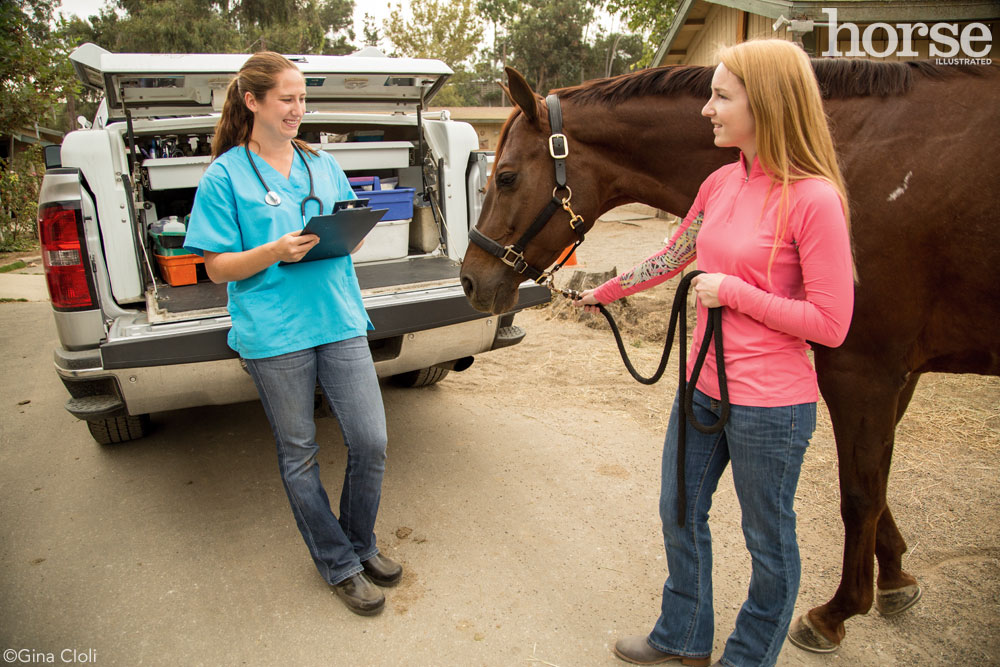
Heart Rate (Pulse)
Here’s how to find your horse’s pulse:
- Place your index and middle fingers in the groove between your horse’s cheeks underneath his jaw.
- Bring your fingers toward you so you are feeling the inside of his cheekbone—this can be done on either the left or right side.
- Carefully feel for a rope-like, rubbery structure; that’s the mandibular artery.
- Press your fingers lightly over it until you pick up a pulse. Don’t measure heart rate with your thumb because you might be picking up your own pulse instead. Always use your index and/or middle fingers.
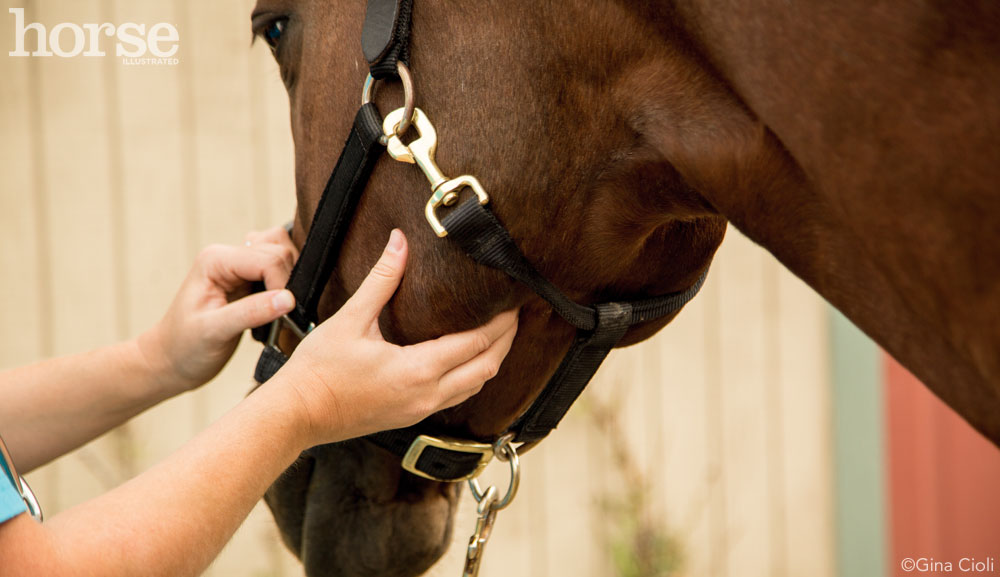
What’s normal: Normal resting heart rate for an adult horse averages between 28 and 44 beats per minute (bpm). Very young foals have resting heart rates between 70 and 120 beats per minute.
How to calculate: To calculate your horse’s heart rate, find the pulse and count beats for 15 seconds, then multiply that number by four. This gives you the number of heartbeats per minute. Remember that one heartbeat equals a two-part “lub-dub” sound—don’t accidentally double count.
Respiration Rate
Have your horse stand quietly without moving. Carefully watch the nostrils and count how many times you observe your horse breathe in. If you can’t easily observe movement in the nostrils, another place to observe respiration is your horse’s flank. Don’t be tempted to hold out your hand close to the nose to feel your horse’s breath; this may cause your horse to sniff your hand, which will artificially elevate his true breathing rate.
What’s normal: Normal resting respiration rate for an adult horse averages 10 to 24 breaths per minute. Newborn foals are about double: 20 to 40 breaths per minute.
How to calculate: As with heart rate, count the number of breaths you observe for 15 seconds, then multiply by four. Remember that a single breath is comprised both of an inhale and exhale, so don’t double count.
Temperature
In your emergency health kit, you should have a digital thermometer.
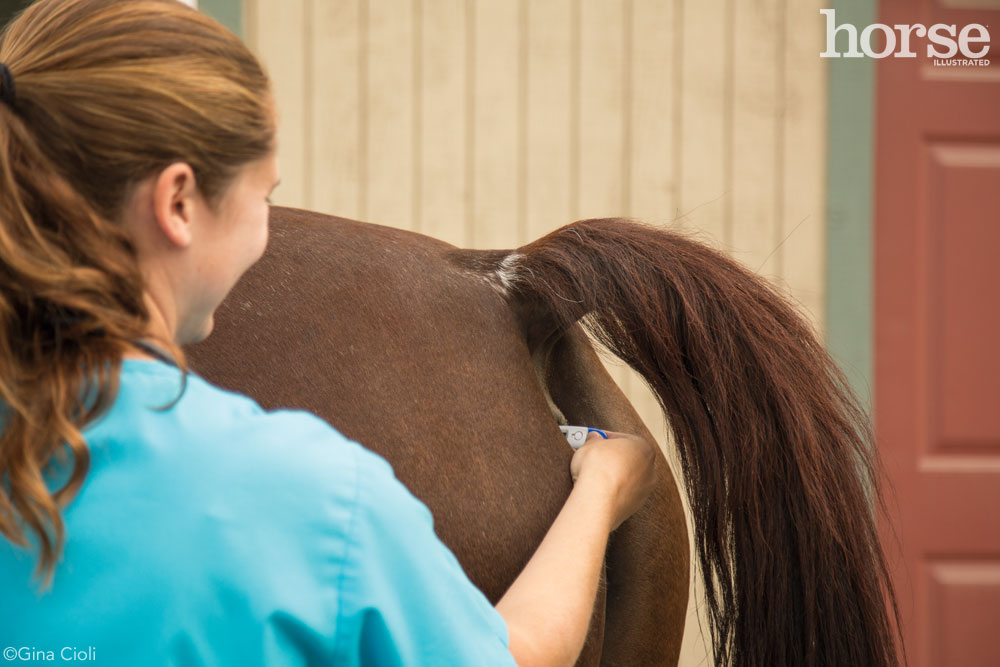
Carefully stand to the side of your horse’s rear. Make sure your horse is tied, or someone is holding his halter. Talk to your horse so that he knows you are there and run your hand down his back to his tail. Carefully and slowly lift the tail head to the side. If available, apply some lubricant to the tip of the thermometer. Insert the end of the thermometer into your horse’s rectum. Do not let go of the thermometer. If your horse moves, move with him. Only remove the thermometer after you hear the beep.
What’s normal: Normal rectal temperature for an adult horse averages between 99° and 101° Fahrenheit. A newborn foal’s temperature can reach 102° F and still be considered normal.
Mucous Membranes and Capillary Refill Time (CRT)
Evaluating your horse’s mucous membrane color and moistness along with CRT are measures of your horse’s hydration status and blood pressure.
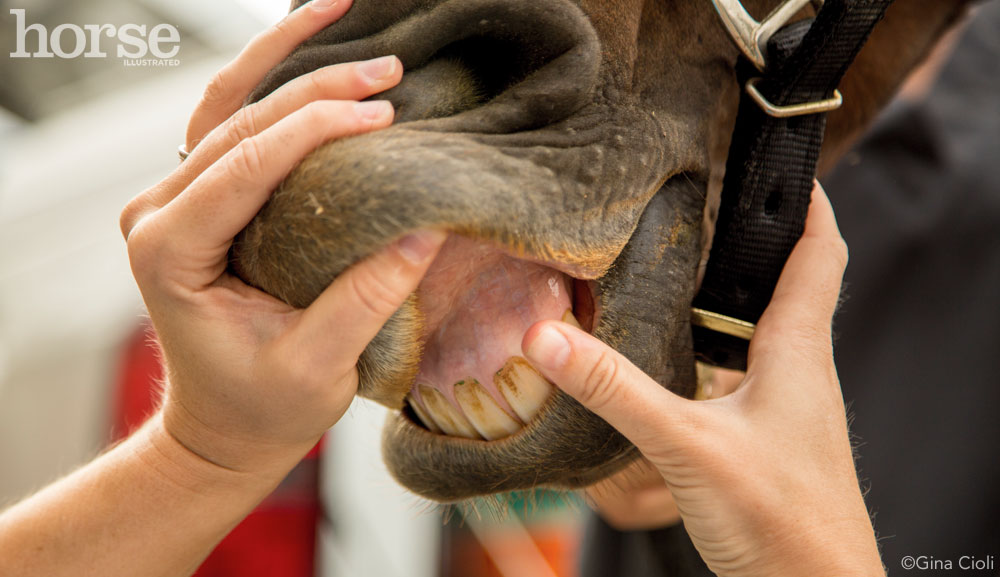
Lift your horse’s upper lip so you can easily see his gums, which are his mucous membranes. First observe their color. Touch the gums lightly with your finger to assess how moist they are.
To measure CRT, press on the gums with your finger for a few seconds. Lift your finger. The gums will first be pale and then the pink color will return. Count the seconds it takes for the gums to return to their original color.
What’s normal: Normal mucous membranes for an adult horse should be pink to light pink and moist. CRT should be two seconds or less. These values are the same for newborn foals. Examples of abnormal mucous membranes include white, gray, or dark purple gums.
Gut Sounds
Your horse’s intestinal tract should always be moving. Listening to your horse’s gut sounds helps you evaluate how well his digestive tract is working; this is a vital part of his overall health. Although you can hear some gut sounds by carefully listening at your horse’s side with your ear, the best evaluation is done through a stethoscope. You can purchase a reasonably priced stethoscope at most pharmacies.
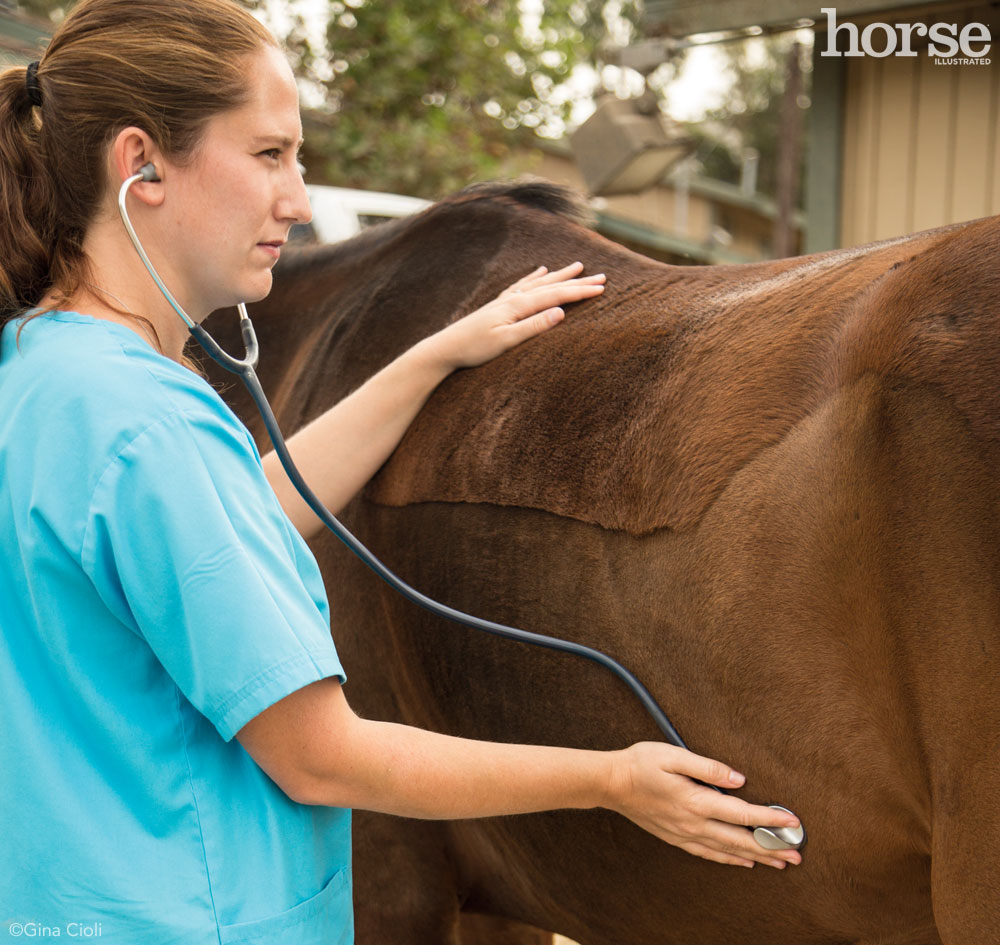
A horse’s gut can be divided into four quadrants: upper and lower on the left and right side. With your stethoscope in your ears, start on the left side of your horse. Place the instrument’s flat side down onto the upper left side of the horse’s abdomen a few inches behind the ribs and at about level with the hip. Don’t move the stethoscope around, just listen in one spot for about 15 seconds. Then, move the stethoscope to the lower left quadrant: move straight down until you start to reach the curve of the belly. Again, pause here for about 15 seconds and listen. Repeat on the right side.
What’s normal: An average horse, regardless of age, should have a relatively active gut producing a range of different sounds such as gurgles, roars, creaks, whooshes, and tinkles. Listening to the entire gut, you should hear some, or even all, of these sounds. Abnormal gut sounds are ones that are greatly decreased or completely absent. Be sure to listen to all four quadrants. Don’t assume that if one quadrant sounds normal, the other three do, too.
This article originally appeared in the January 2016 issue of Horse Illustrated magazine. Click here to subscribe!






More great information, always learn new things on Horse Channels.
Thank you Horse Channels for another good informational article. I, too, have learned a few new things today as I read this.
Good information, hope I an remember all those numbers
yes, we all need to learn these.